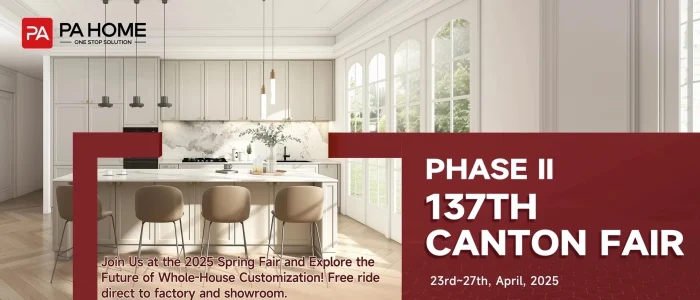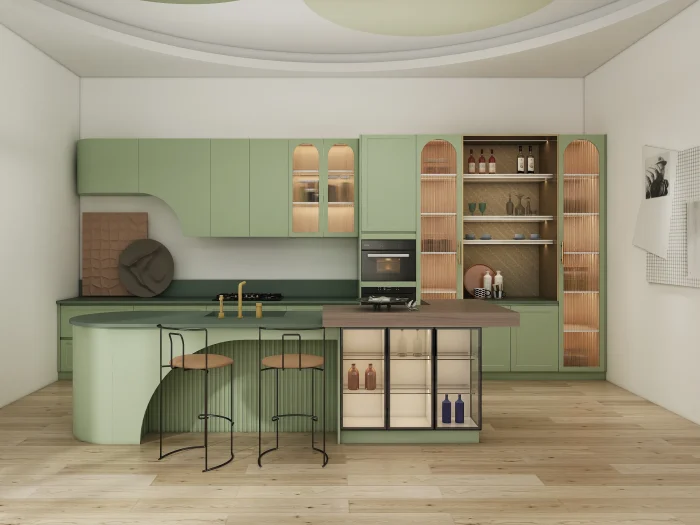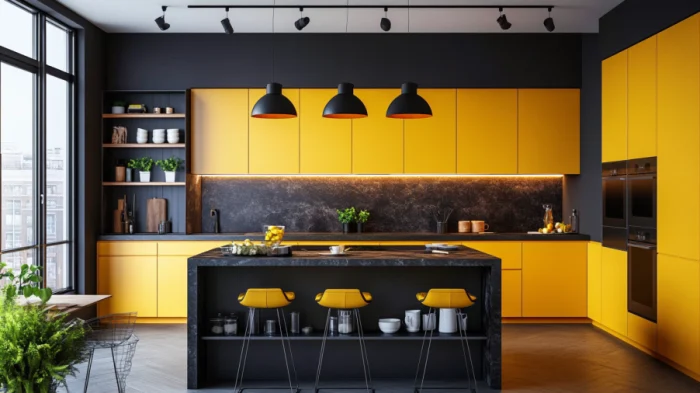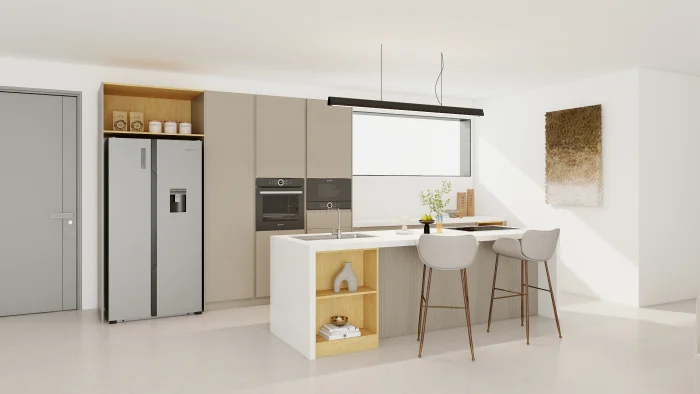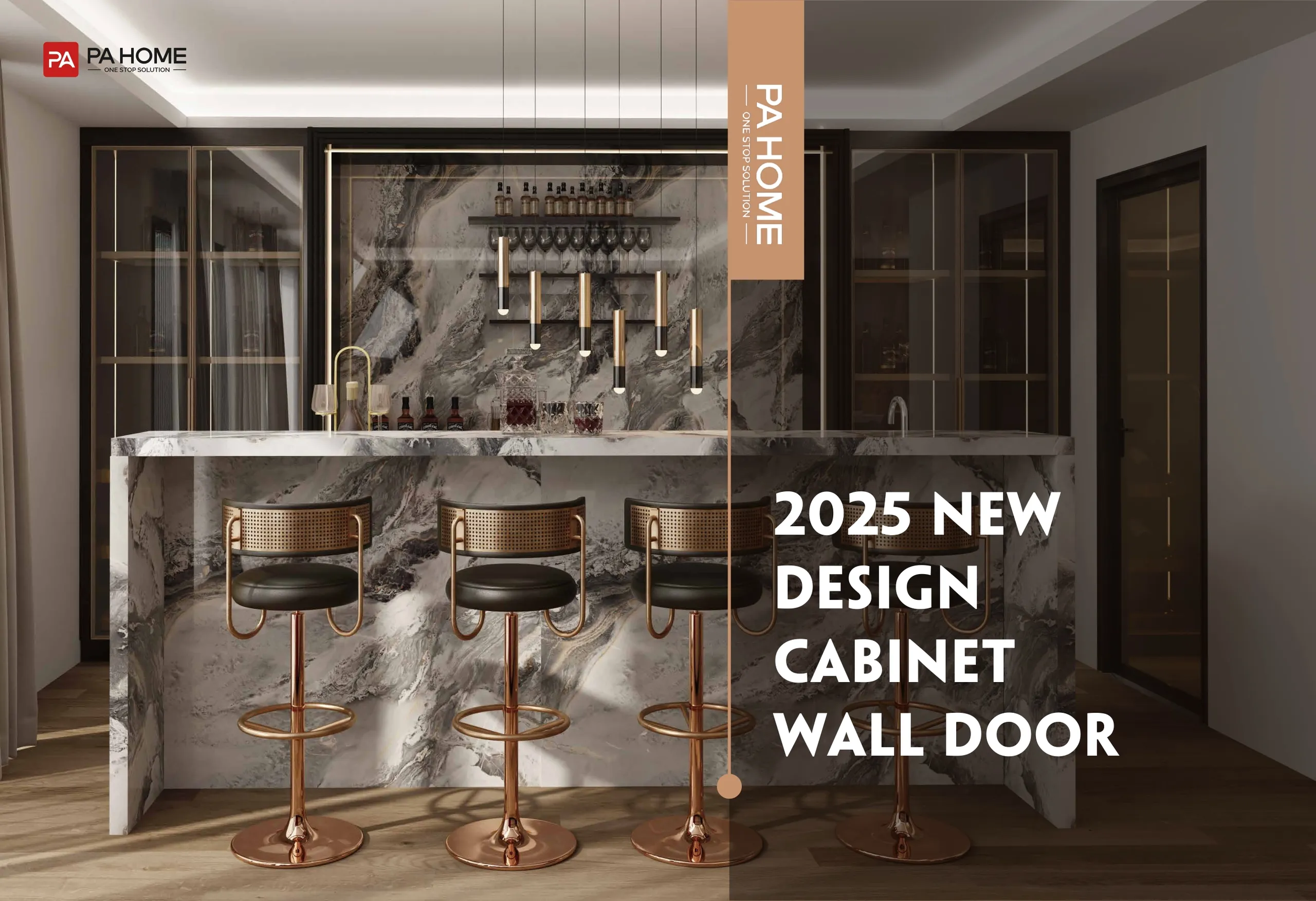European style kitchen cabinets has become increasingly popular in recent years due to its sleek, modern look and innovative design features. If you’re considering European style kitchen cabinets for your home, here’s a professional guide to help you make an informed decision.
What is European Style Kitchen Cabinets?

European style kitchen cabinets refers to a type of cabinetry that originated in Europe and has become popular in North America. This style is characterized by its minimalist design, with simple lines and clean edges, and often features high-gloss finishes. It typically includes frameless construction, meaning that there is no face frame around the cabinet box, and the doors and drawers are attached directly to the cabinet box. This creates a sleek, streamlined look that maximizes storage space and makes it easier to access items in the cabinets.
Advantages of European style kitchen cabinets
Modern Design and Aesthetics: European style kitchen cabinets is known for its sleek and modern design, with clean lines and a minimalist aesthetic. This can give your home a contemporary look and feel that’s popular in urban areas.

Space Optimization: European style kitchen cabinets are typically frameless, which means that they don’t have a face frame around the cabinet box. This allows for more storage space and easier access to items in the cabinets, maximizing the use of your kitchen or bathroom space.

Functionality and Efficiency: European style kitchen cabinets often includes innovative design features such as pull-out drawers, integrated lighting, and high-tech storage solutions. These features can make your cabinets more functional and efficient, and can help you organize your belongings more easily.
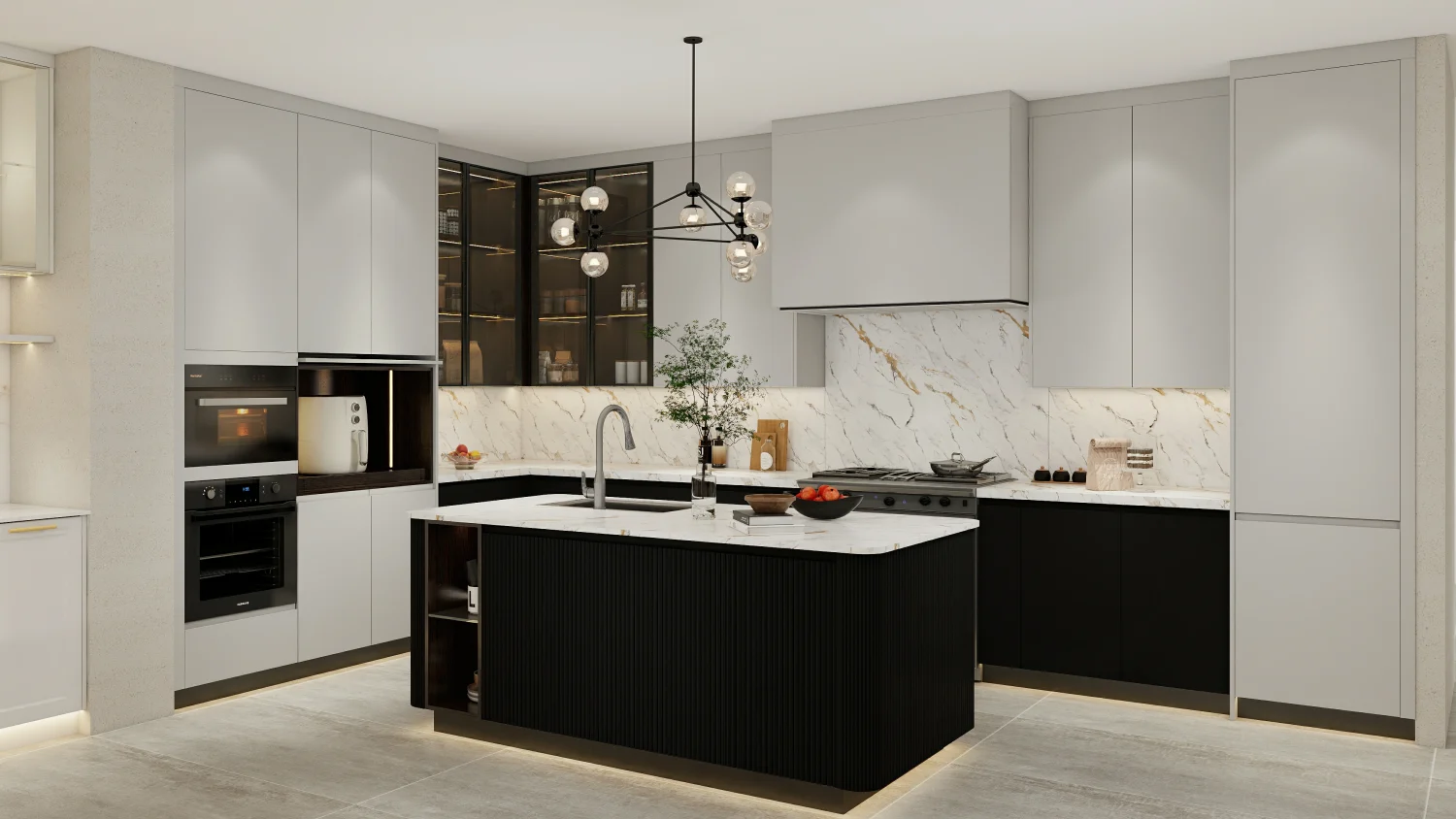
Versatility and Customization Options: European kitchen cabinets comes in a wide range of materials, finishes, and colors, and can be customized to fit your specific design preferences and needs. This allows you to create a unique look that reflects your personal style and taste.
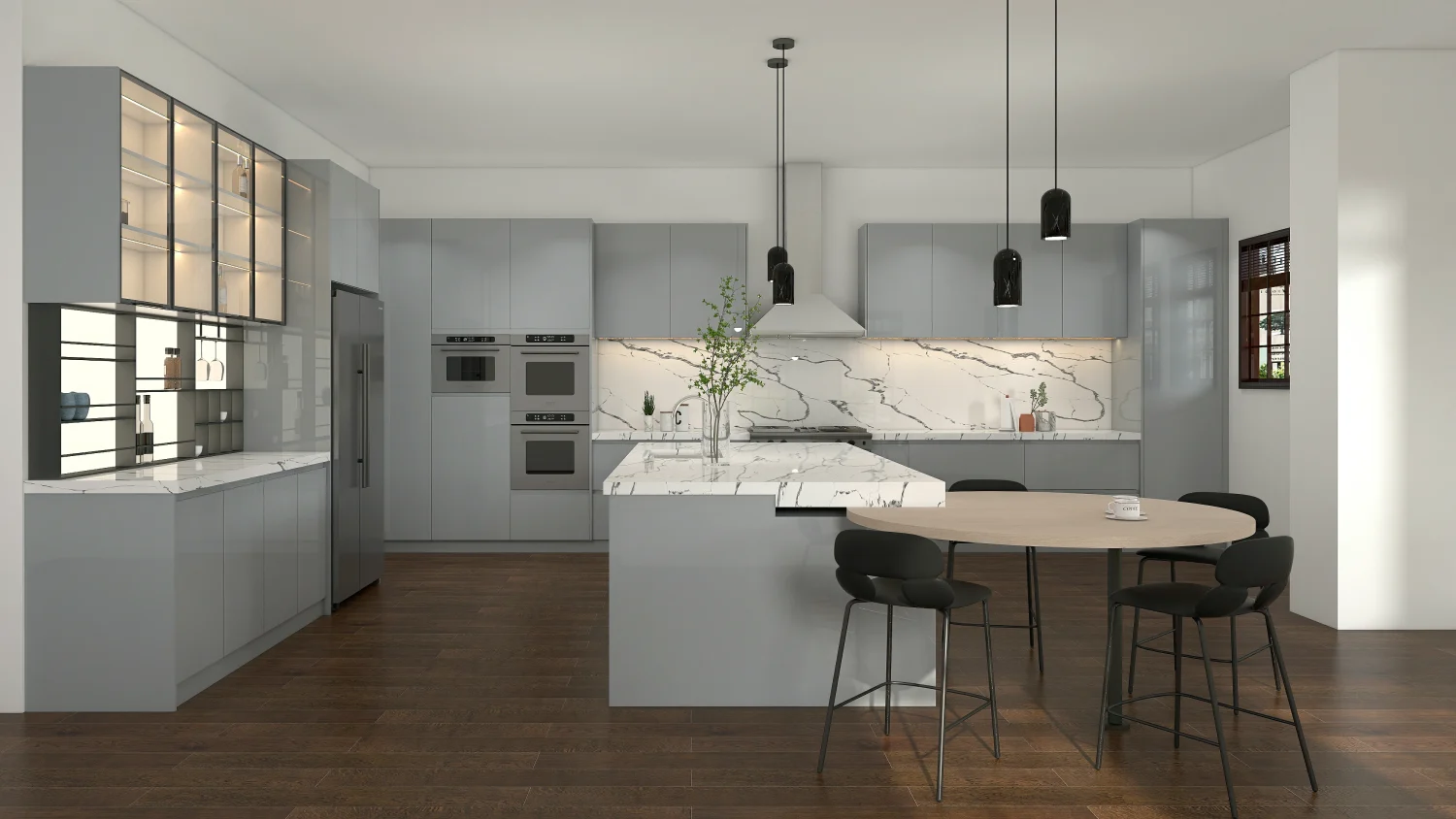
Durability and Quality: European style kitchen cabinets is typically made from high-quality materials, such as hardwoods or laminates, and is built to last. This can ensure that your cabinets stay looking great and functioning well for years to come.
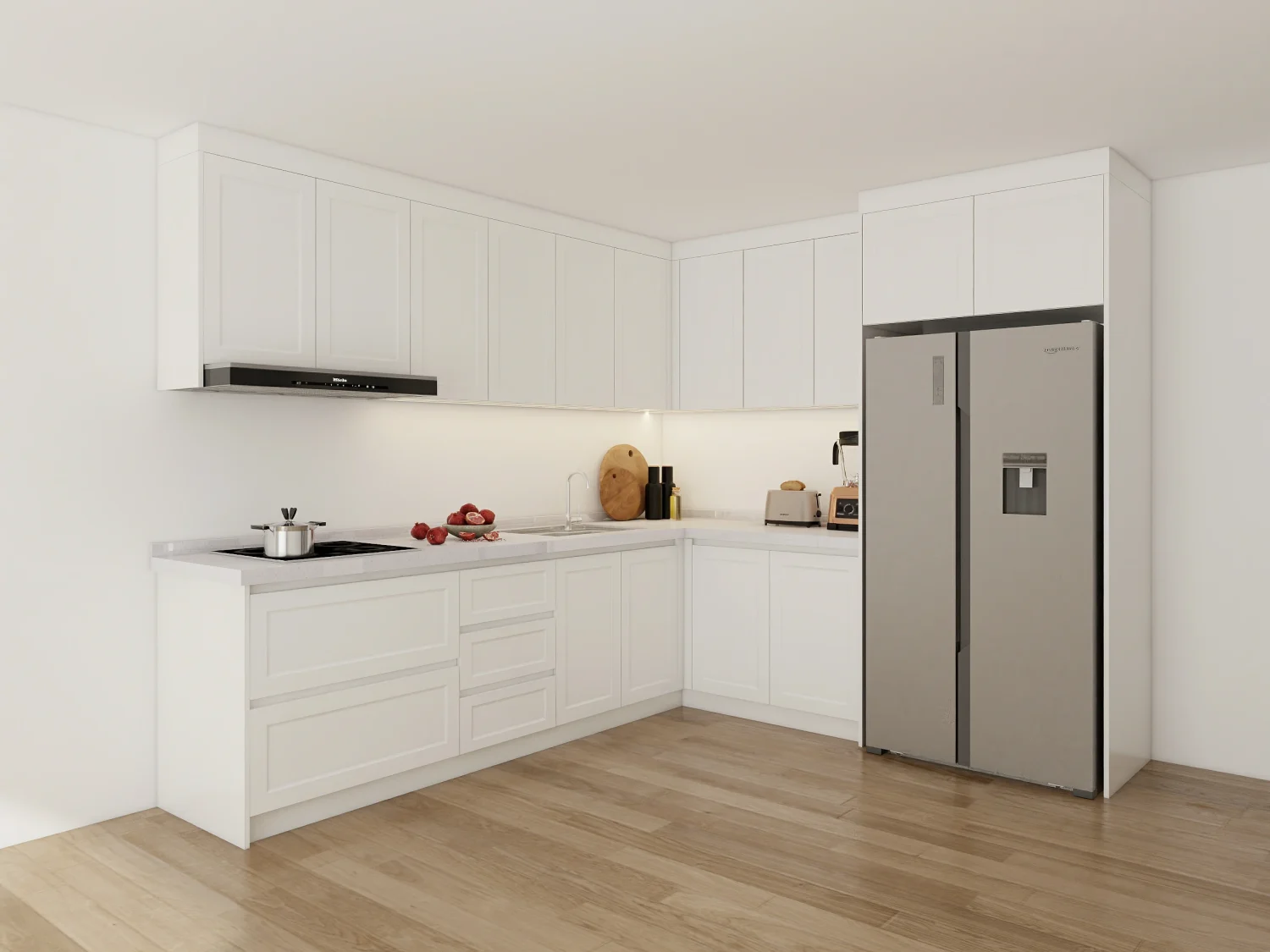
Types of European style kitchen cabinets
European style cabinetry is a popular type of kitchen cabinetry that originated in Europe and is known for its sleek and modern design. There are different types of European style cabinetry that are differentiated by their construction, overlay, finish, and material. Here are some of the most common types:
Frameless vs Framed Cabinets: European style cabinetry can either be frameless or framed. Framed cabinets have a face frame that is attached to the front of the cabinet box, while frameless cabinets do not have a face frame and rely on the strength of the cabinet box itself. Frameless cabinets offer a more contemporary look, while framed cabinets have a more traditional look.

Full Overlay vs Partial Overlay: Another way to differentiate European kitchen cabinets are by its overlay. Full overlay cabinets cover the entire face of the cabinet box, leaving very little space between doors and drawers. Partial overlay cabinets leave some space between doors and drawers, which allows for a visible frame or reveal around the doors and drawers.

High Gloss vs Matte: European style cabinetry can come in a variety of finishes, including high gloss and matte. High gloss cabinets have a shiny, reflective finish that can give a modern and glamorous look, while matte cabinets have a non-reflective, muted finish that can give a more subdued and contemporary look.

Wood vs Laminate vs Other Materials: European style cabinetry can be made from a variety of materials, including wood, laminate, and other materials. Wood cabinets offer a natural, warm look and can come in a variety of stains and finishes. Laminate cabinets are a more affordable option and come in a variety of colors and textures. Other materials, such as glass, metal, or acrylic, can offer a more modern and unique look to the cabinetry.

Which Hardware Elevates Soft-Close Functionality?
Blum’s CLIP-top BLUMOTION hinge integrates the damper and has been fatigue-tested to 200,000 cycles (≈40 years at 15 opens/day). Hettich Minimat mini hinges certify 40,000 cycles — adequate for lightweight doors, not heavy lacquer slabs
| Spec | Blum | Hettich | DTC | Generic Import |
|---|---|---|---|---|
| Cycle-life lab test | 200 000 cycles (≈ 40 yrs @ 15 opens/day) | 200 000 cycles on flagship models | 50 000 cycles on mainstream lines | <100 000 cycles (limited testing) |
| 6-way adjustment | Yes — tool-less cams | 4-way typical; 6-way on select lines | Yes — full 6-way micro-adjust | Rare; depth screw only |
| Soft-close integrated | ✔ (BLUMOTION piston) | ◑ (clip-on damper upgrade) | ✔ (built-in speed-adjust piston) | ✖ — external or none |
| Typical retail price / hinge (USD) | $5–7 retail / $3–4 bulk | $3–5 retail / $2–3 bulk | $2–4 retail / <$2 bulk | $1–2 retail |
Budget 3–5 % of cabinet spend on hinges and slides; they’re the suspension system of your kitchen “SUV.”
How Much Do European Cabinets Cost per Foot?
The cost of European style kitchen cabinets in 2025 varies based on several factors, including material quality, brand, and the complexity of your kitchen design. Let’s dive into the specifics, including updated pricing ranges and key factors that influence costs. This section will give you a detailed understanding of what to expect when investing in a European-style kitchen in 2025.
Cost Factors for European Cabinets in 2025
When pricing European kitchen cabinets in 2025, there are a few primary elements that will affect your final costs:
- Material Quality:
European cabinets are known for their high-quality materials, and the choice of material plays a significant role in determining the price. Premium materials like solid wood veneers, high-gloss acrylics, and custom laminate finishes can increase the cost. MDF and plywood are also common materials used, with their cost varying depending on the quality and type of finish. - Cabinet Type:
European-style cabinets are primarily frameless, which means they offer greater storage space. Frameless construction involves precise engineering and typically costs more than traditional framed cabinets. Customization also plays a role in pricing; the more tailored the design, the higher the cost. - Branding and Manufacturing:
Premium European brands such as Poggenpohl, SieMatic, and Bulthaup are known for their exceptional quality, sleek finishes, and innovative designs. These brands command higher prices due to their reputation, materials, and craftsmanship. Mid-tier brands like Schüller and Nobilia offer more affordable options without compromising too much on quality. - Location and Installation:
The cost of installation varies based on the complexity of the kitchen design and local labor rates. European-style cabinets, especially frameless models, often require more precise installation, which can add additional costs to the project. For example, labor costs may account for about 30-40% of the total project cost.
2025 Pricing Breakdown Per Linear Foot
| Cabinet Type | Price Range (Per Linear Foot) | Material and Features | Brands/Examples |
|---|---|---|---|
| Stock European Cabinets | $180 - $300 | MDF or particleboard, melamine or laminate finishes, pre-assembled or RTA | Ikea, Home Depot, Lowe's |
| Mid-Range European Cabinets | $300 - $600 | MDF, plywood, lacquer, matte finishes, premium hardware, semi-custom options | PA Home, Schüller, Nobilia, Wren Kitchens |
| Premium European Cabinets | $600 - $1,500+ | High-gloss acrylic, solid wood veneers, full customization, advanced hardware systems | Poggenpohl, Bulthaup, SieMatic |
Considerations Before Choosing European Style Cabinetry
Kitchen Size and Layout: Before choosing European style cabinetry, it’s important to consider the size and layout of your kitchen. European style cabinets can work well in both small and large kitchens, but the layout and design of your space may influence the type of cabinetry that will work best.


Storage Needs and Organization: European style modern kitchen cabinets offer a variety of storage solutions, including pull-out drawers, built-in dividers, and other organization features. It’s important to consider your storage needs and how you plan to use your cabinets before selecting a particular design or layout.
Material and Quality: European style cabinetry can be made from a variety of materials, including hardwoods, laminates, and high-quality engineered wood products. It’s important to choose materials that are durable, easy to maintain, and fit within your budget.
Budget: European style cabinetry can be more expensive than other types of cabinetry, so it’s important to set a budget and stick to it. There are many options available at different price points, so it’s possible to find European style cabinets that fit within your budget while still meeting your design and functionality needs.
Designing and Installing European Style Cabinetry
Working with a professional cabinetry manufacturers: It is highly recommended to work with a professional designer who specializes in European style cabinetry. They can help you create a functional and stylish design that meets your specific needs and budget. They can also assist you in selecting the right materials, finishes, and hardware for your project.
Installation process and timeline: The installation of European style cabinetry typically involves a multi-step process that can take several days or even weeks to complete, depending on the size and complexity of the project. The installation process may include the assembly of the cabinets, installation of the hardware, and the final placement and alignment of the cabinets. It is important to work with a professional installer who has experience with European style cabinetry and can ensure that the installation is done correctly and efficiently.
Measuring and layout considerations: Accurate measurements are crucial when designing and installing European style cabinetry. A professional designer will take precise measurements of your space and create a detailed layout plan that includes the placement of cabinets, appliances, and other elements. It is important to consider factors such as the location of electrical and plumbing lines, as well as any structural constraints that may impact the design.

Maintenance and Care for European Style Cabinetry
Cleaning tips: To clean your European style cabinetry, use a soft cloth or sponge and a mild, non-abrasive cleaner that is appropriate for the type of material used in your cabinets. Avoid using harsh chemicals or abrasive cleaning tools, which can damage the finish or material. Always wipe up spills and stains immediately to prevent them from becoming permanent. For high gloss finishes, use a microfiber cloth to prevent scratching.
Preventative maintenance: To keep your European style cabinetry looking and functioning great, it is important to take some preventative maintenance steps. Avoid placing heavy or sharp objects on the cabinets that can scratch or dent the surface. Use cabinet liners to protect the interior of the cabinets from spills and stains. Keep the cabinets dry and well-ventilated to prevent moisture buildup, which can lead to warping or mold growth. Avoid exposing the cabinets to direct sunlight or extreme temperatures, which can cause fading or cracking.
Troubleshooting common issues: If you encounter any issues with your European style cabinetry, such as loose or misaligned doors or drawers, check to ensure that the hardware is properly tightened and aligned. If the finish becomes damaged or worn, you may need to touch up or refinish the affected area. For more serious issues, such as warping or cracking, you may need to consult a professional to repair or replace the affected cabinets.
Conclusion
Overall, European style cabinetry is a great choice for homeowners who want a stylish and modern look for their living spaces. It is important to work with a professional designer and installer who has experience with European style cabinetry and can ensure that the project is completed successfully. Proper maintenance and care are also essential to keep the cabinets looking and functioning great. With the right planning and attention to detail, European style cabinetry can be a great investment in your home that provides many years of enjoyment and functionality.
FAQs
European style kitchen cabinets are characterized by their sleek and modern designs, often featuring clean lines, flat surfaces, and minimal decorative elements. They typically use high-quality materials such as wood veneer, lacquer, and glass, and often incorporate innovative storage solutions. Compared to traditional styles, European style kitchen cabinets offer a more contemporary and minimalist look.
The cost of European style kitchen cabinets can vary depending on factors such as materials, size, and complexity of the design. However, due to their use of high-quality materials and innovative storage solutions, they may be more expensive than traditional styles.
Yes, many manufacturers of European kitchen cabinets offer customization options to fit a variety of kitchen layouts and sizes. This can include options for adjusting cabinet sizes and configurations, as well as incorporating unique storage solutions to meet your specific needs.

